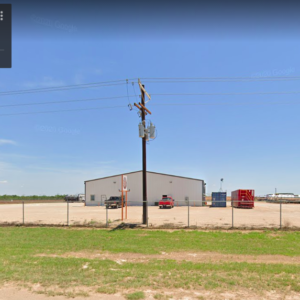As we’ve passed the halfway mark of 2021, we know a few things about the freight capacity crunch: it’s bad and only appears to be getting worse. As a shipper, you are having great difficulty moving freight, while carriers are being offered more loads than they can possibly handle. In this article, we’ll examine the smaller things that conspire to cause these larger problems and tell you what you can do to increase your chances of getting your bulk freight loads on the move.
The shipper’s dilemma: no capacity
 As a shipper, you are in a bind and have been for much of the time since the start of the COVID-19 pandemic. You need to ship your products, but it’s next to impossible to find capacity. So, you try being patient and booking your loads far in advance. But lately, that’s not even working because transportation providers don’t seem to know when they’ll have capacity – they just know that they don’t have any now.
As a shipper, you are in a bind and have been for much of the time since the start of the COVID-19 pandemic. You need to ship your products, but it’s next to impossible to find capacity. So, you try being patient and booking your loads far in advance. But lately, that’s not even working because transportation providers don’t seem to know when they’ll have capacity – they just know that they don’t have any now.
You may even try to ship your bulk products in ISO tanks and drums on flatbed trucks or in dry van trailers. But shortages of tanks and drums have made that difficult as well.
Your efforts continue day in and day out. You’re eventually able to book your loads, but even when you do, unforeseen circumstances have a way of disrupting your plans. And, all the while, your internal stakeholders are frustrated and wondering why it’s taken 3 weeks and your product has still not been delivered to its destination.
The carrier’s dilemma: uncertainty
You are understandably perplexed at the inability of transportation providers to schedule your loads. Don’t they have calendars where they can slot loads within shipping lanes? The answer is yes, they do – but these plans often go out the window. Here are some real-world examples why this happens.
- A driver calls out sick and can’t haul his scheduled load. A domino effect then begins where the carrier has to pull the driver from the next load to cover the first one, and then pull the driver from the third load to cover the second one, and so on. As the dominos fall, loads at the back of the line are now left without drivers.
- A driver arrives at the manufacturing plant to offload a chemical product. However, the manufacturing site can’t unload the chemical for one of a number of reasons (e.g., the storage tank is full because another driver hasn’t arrived to unload it). The driver now must wait several days to unload or, even worse, has to wait several days only to be told he now must drive hundreds of additional miles for unloading. Such occurrences throw the driver’s schedule and the carrier’s schedule into disarray.
- A carrier has dropped trailers at multiple manufacturing plants. The plants take anywhere from a few days to over a week to unload these trailers. This waiting game leads to uncertainty on when trailers will be available – and thus when the carrier can get them washed and ready for loading again. Speaking of tank washes, the same scenario plays out at wash facilities where drivers must now drop their trailers off and wait (typically) a day or more for the wash to be completed.
- As carriers’ tractors and bulk trailers/tankers are in use almost constantly, there are the inevitable mechanical hiccups that occur. Repairs often cause the equipment to be offline for over a week as parts shortages have become commonplace due to pandemic-related inventory disruptions.
These are just a few examples of the daily struggles that transportation providers face. When taken into account, it becomes a little easier to understand why providers don’t always have a bead on when and where their equipment will be available.
What can you do as a shipper to secure capacity?
Even though you may now better understand the carrier’s dilemma, your dilemma still remains. You need to get your bulk products on the move.
During a pre-pandemic freight capacity crunch, Bulk Connection wrote a handy eBook on Sourcing Bulk Freight Capacity. Many of that eBook’s tenets still ring true during the current capacity crunch.
In the here and now, the following tips will be your best ways to get your products on the move.
- Be flexible. If you can give your transportation provider advance notice and be flexible with your timeframe, you are increasing the odds that your provider can fit you in its schedule.
- Stay close to your transportation partners. Due to the uncertainty described above, carrier capacity changes day to day. So, while a call to your transportation provider may prove fruitless today, tomorrow may be a different story. The phrase “a squeaky wheel gets the grease” applies here. It should be noted, however, that transportation providers will likely give preferential treatment to shippers with whom they have long-standing relationships. So, lean on your closest partners and check in with them often.
- Turn to bulk freight brokers. When you try to source capacity with a carrier, you’re limited to that one carrier’s offerings. When you work with a freight broker that specializes in bulk transport, however, that broker can match your load with its entire carrier network – often consisting of hundreds of carriers. No matter where your shipping lanes are, your freight broker likely has carrier partners in that lane, both large and small, that may be able to handle your product. That’s a lot of reach with one single phone call.
Bulk Connection is a freight broker that specializes in liquid and dry bulk freight. We have supported the businesses of shippers and carriers alike since 1987. And while we have the capacity constraints just like every transportation provider at the moment, the size and scope of our network allows you to cast a much wider net in your search for capacity. To learn more about our services and the ways we can support your operation in good times and tough times, contact us today.



